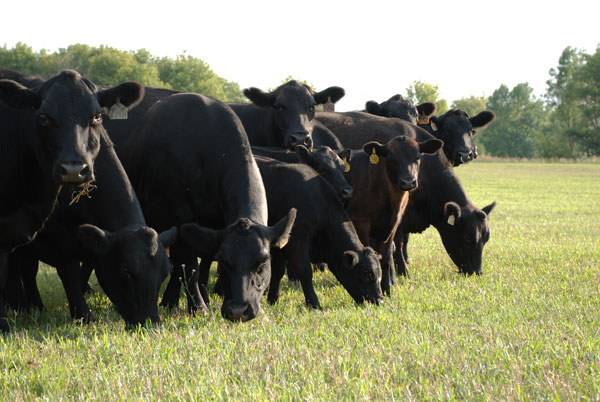What will the beef business look like 20 years from now?

It is, at best, a murky proposition, trying to peer into the industry’s future. “But that doesn’t mean we shouldn’t try,” says one long-time industry warrior. And while we’re trying to look ahead, he says, it might be a good idea to look around a little, too.
Speaking recently to BEEF editors, Chandler Keys, long-time beef industry lobbyist in Washington, D.C., offered his thoughts and opinions on the beef business and its future. “I think what a lot of people are trying to figure out is how will a mature economy, a mature society, going to operate in the next 10 to 20 years? What’s the industry going to look like; what is the consuming public going to look like?”
Good questions. And while the answers may be difficult to pin down, they are questions worthy of debate and discussion as cattlemen make expansion decisions in the wake of high market prices and changing demographics in the cattle business, Keys says.
His general take is that there’s still some consolidation to be done in the poultry sector, hog producers have a tough go ahead of them as they deal with Porcine Epidemic Diarrhea Virus, and packers are going to try to get closer to the consumer by buying brands. “In a mature economy, (packers will) try to figure out a brand strategy to drive growth.”
Then there’s the cattle business. The challenge, Keys says, is figuring out the supply equation.
“Seventy percent of our beef comes from 30% of our producers,” he says. The flip side of that is 70% of producers produce 30% of the beef. “I want to know if that 70% (of producers) is going to be around the next 10 years.”
He ponders that question from several perspectives. First are the changing demographics of beef producers. They’re getting older and if cattle are only a part-time endeavor for them, they may opt to cut back.
Subscribe now to Cow-Calf Weekly to get the latest industry research and information in your inbox every Friday!
“I look at the cow-calf business and I think, ‘who’s going to do this?’ I know the guy with 200 cows or more, they’re going to do it (stay in business and even expand), unless they get droughted out. But who’s going to lead 30% of our production that comes from small operations? I think that’s the challenge for our business, to figure out the supply side,” he says.
Another challenge is how will cattlemen operate in an increasingly competitive protein industry? “I worry about our ability to look inside ourselves,” he says.
“That’s not the case with other proteins,” he adds. “If you’re in the hog business, you know everything about it. These poultry guys, when they get to work in the morning, know exactly what’s going on and they react correctly. And I think the dairy industry will get more that way.”
Cattlemen, as a general rule, don’t do that. They tend to be unfamiliar with the other segments in the marketing chain. And more to the point, Keys says, they tend to have little or no knowledge of how their competitors in the pork, poultry and dairy industries operate. To become more fully competitive in the protein complex, that knowledge and understanding will become more and more important, he contends.
And that’s true for packers and feeders, not just cow-calf producers, he says. Cow-calf production is risky, and if feeders and packers want to continue to have an adequate supply, they’re going to have to figure out how they can take some of the risk off the table for cow-calf producers.
But it won’t be by owning land. It may be by long-term contracts or part ownership of cows. “At the end of the day, they could help offset the risk of owning those cows through some sort of long-term relationship.”
Keys says people tell him his concern about the beef industry’s ability to get the supply side of the business in order is misplaced. If calf and feeder prices get high enough, expansion will happen.
“I hope they’re right and I’m wrong,” he says. “But it’s this nagging suspicion I have that we’re in a new era in cow-calf production. If you’ve got 200 mother cows, I think you’re in the business and will try to find ways to expand. If you’ve got less than 200 cows and you do it by yourself, I’m not so sure you’re going to run out there and try to find pasture, buy cattle and find a hired hand,” he says.
“My tagline is we’ve worked diligently for 30 years getting our demand solid and global. And demand for our product is solid and global today, no doubt about it. Then we look around and say everything is good, bring on the cows. And there are no cows. Then we say they’ll come, just get these calf prices up to $2.50. I hope they do. But that’s the quandary, right?”
You Might Also Like:
See How Dung Beetles Do The Dirty Work For Cattle Producers
Modified-Live Vs, Killed Vaccines: Which Is Better?
SHARE THIS: Quick Facts About Beef & Journey From Gate To Plate
About the Author(s)
You May Also Like

.png?width=300&auto=webp&quality=80&disable=upscale)

